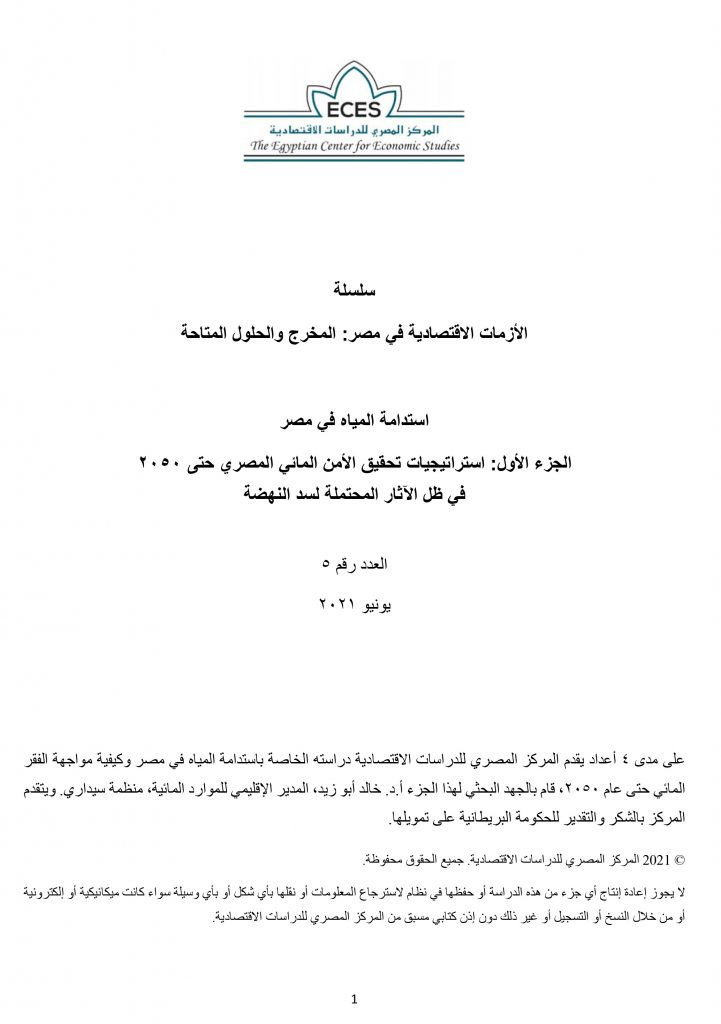Abstract:
This study aimed at developing a water security strategy for Egypt up to 2030 and 2050 in the presence of the Grand Ethiopian Renaissance Dam (GERD). It sheds light on GERD potential impacts on the average Blue Nile flows and hence Nile water supply to Egypt, through different scenarios for GERD filling and operation. The scenarios showed a possible decline in Blue Nile flows due to the cumulative effect of the GERD first filling as well as evaporation and seepage losses associated with its reservoir. This decline would likely affect Egypt’s ability to use its Nile water share by a reduction of 2 to 3 BCM annually during drought years for a period of up to 17 years over the next 100 years, depending on operational rules implemented by Ethiopia. The study re-estimated agriculture, domestic and industrial water needs in Egypt, based on population growth forecasts until 2030 and 2050, and on a detailed study of the optimal cropping pattern scenarios for 2030 and 2050, given the water constraints. It presented the water balance of the proposed strategies to achieve Egypt’s water security until 2030 and 2050 based on 3 scenarios, the first without impacts on Egypt’s Nile water share, and the second if Egypt’s Nile share was affected by a shortage of 2 billion cubic meters by 2030 and 3 billion cubic meters by 2050 and without taking local measures to cope with this shortage, and the third in the event that the share is affected by the same amount, while taking local measures to provide alternative non-conventional water resources. The study did not address the high cost required to provide these alternative water resources.

